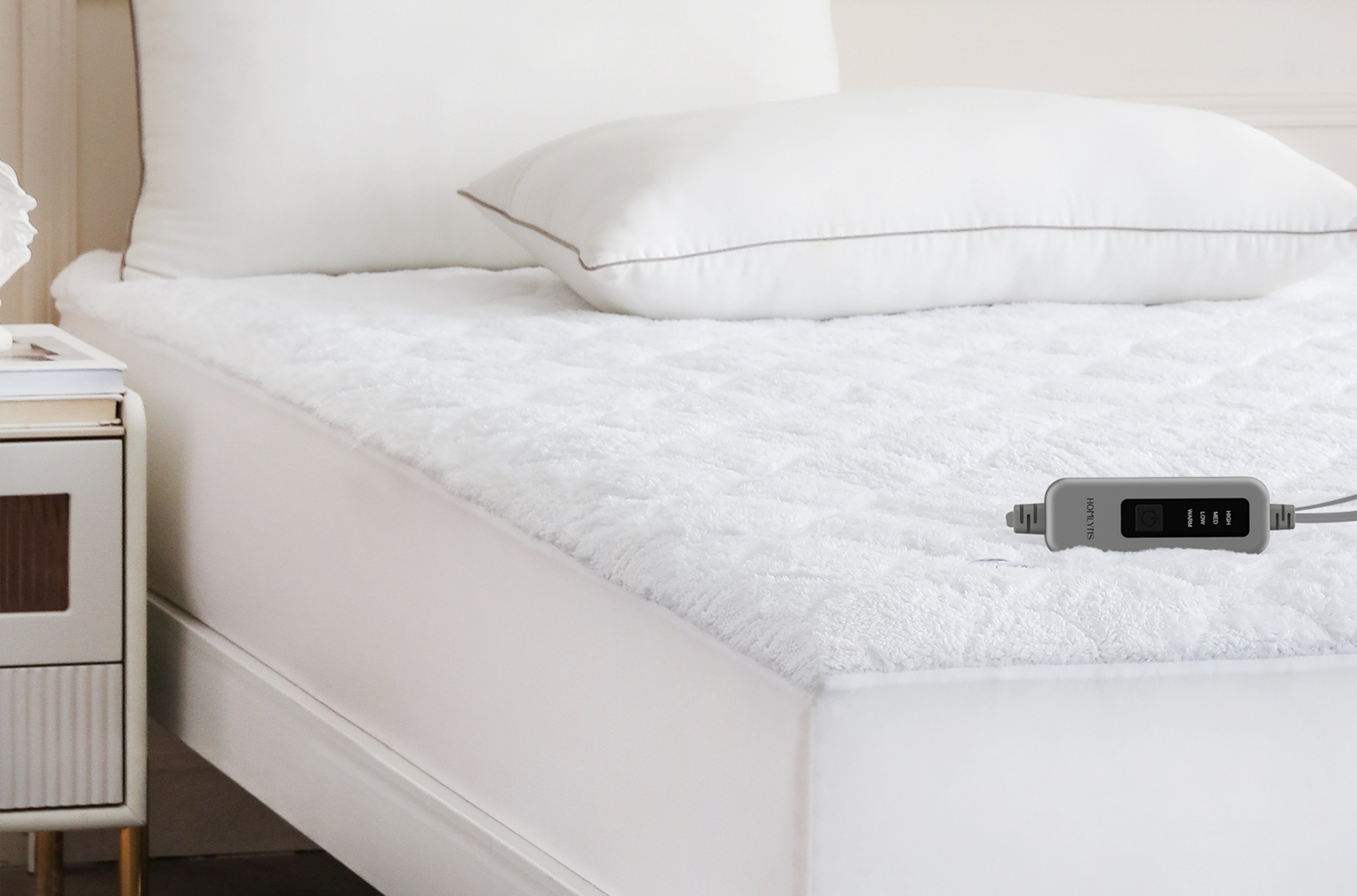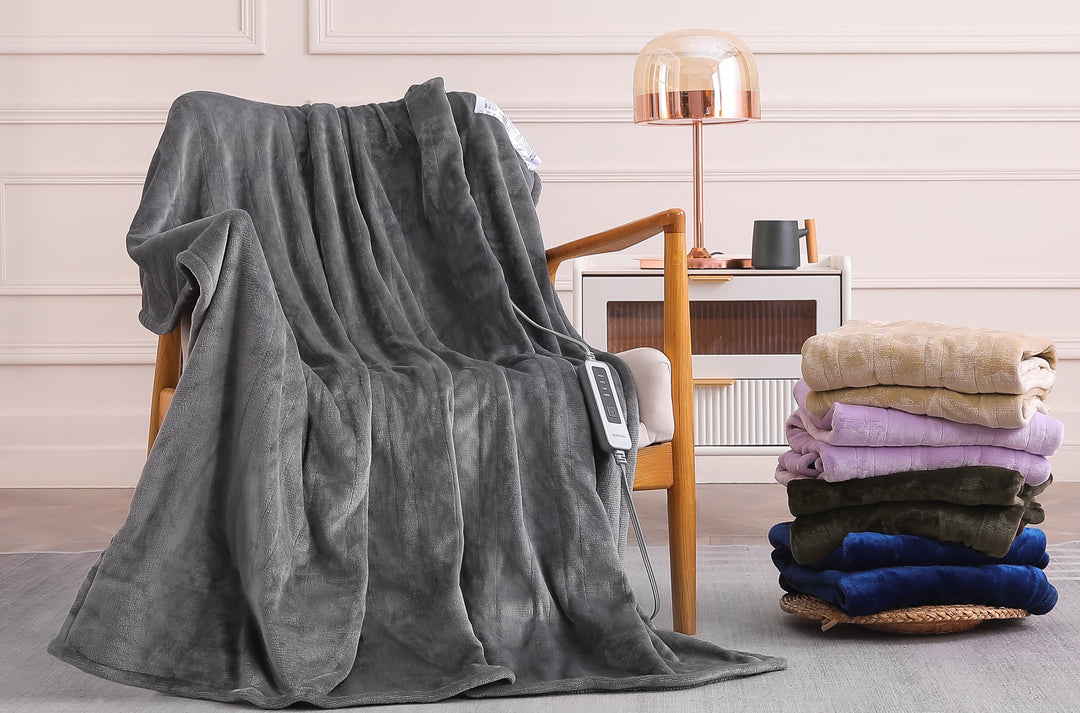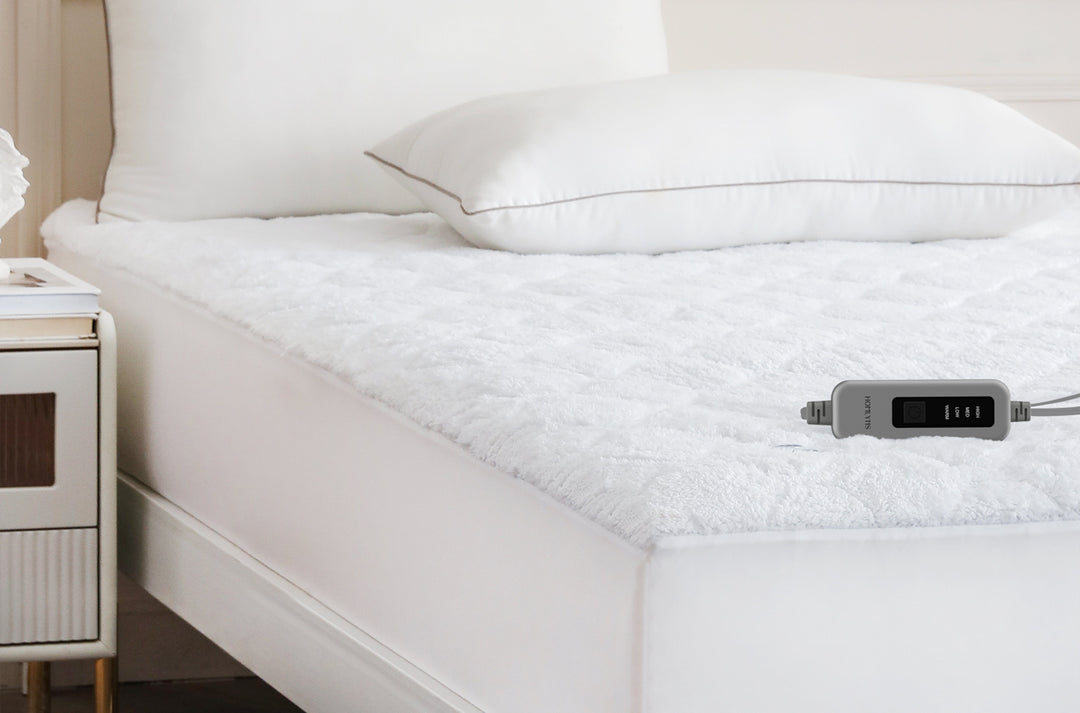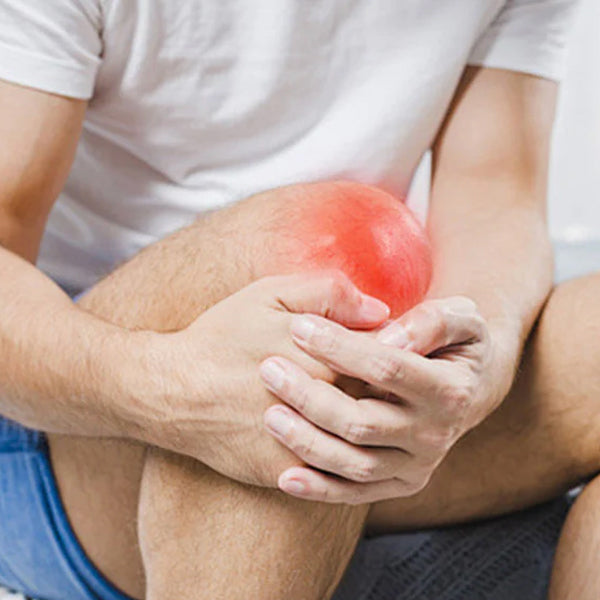Ice v.s. Heat Therapy for Injuries or Pain
When it comes to dealing with joint pain from standing too long or sitting for extended periods, people often face the dilemma of choosing between using ice or heat treatments. This is especially true for those who have physically demanding jobs like working in factories or taking care of animals, as well as for those who spend long hours at desks, leading to issues like headaches and neck pain. The question of whether to use ice or heat is crucial, as it can greatly affect how well pain is managed. Instead of immediately turning to pain pills, many opt for simpler solutions like applying ice packs or using heating wraps for chronic pain.
In this article, we'll explore the question of whether to use ice or heat treatments and the benefits of both ice and heat treatments for different types of discomfort and acute injuries. The goal is to help people make informed choices about which method might work best for their specific situation, whether it's dealing with injuries, muscle pain, or tension. Let's break down the details of using ice and heat to find the right solution for a more comfortable and pain-free life.
Ice Treatment
The most prevalent application of ice therapy is for recent injuries. Use ice or heat if you have an injury that occurred recently (within the previous 48 hours) and swelling is an issue. Using ice packs is useful for pain relief and swelling associated with the injury, as well as lessen bleeding into the surrounding tissues and muscle spasms.
After injuries like an ankle sprain, ice packs are frequently applied. Swelling can be reduced in the initial twenty-eight hours by using ice or taking an ice bath often. Doing this will make the discomfort more manageable, and you can loosen joints and muscle spasms.
Chronic ailments, like injuries caused by overuse in athletes, might also benefit from ice treatments. In this instance, apply ice to the wounded region following exercise to help reduce swelling. Do not ice a long-term injury just before exercising.
Ice cubes stored in a bag of plastic or wrapped in a towel can be used to form ice packs; a freezer-safe box of peas that have been frozen is also a great option. Keep the pack rolling when placing ice directly to an injury to prevent ice burns. In the event that the injury turns bright pink or scarlet, remove the pack right away. You ought to use ice packs for up to twenty minutes at a time, as a rule of thumb.

How does Ice Treatment Work?
Cryotherapy is another name for cold therapy. It functions by limiting blood flow to a specific region, which can greatly lessen pain-causing inflammation and swelling, particularly in the vicinity of a joint or tendon. It can also momentarily lower nerve activity, which lessens discomfort.
Types of Ice Treatment
The damaged region can be treated with cold treatment in a variety of methods. Options for treatment consist of:
-
Frozen gel packs or ice packs
-
Sprays of coolant
-
Ice application
-
Ice baths

Other forms of cold treatment that are occasionally employed consist of:
Whole-body therapy with cold chamber cryokinetics incorporates cold treatment and vigorous activity and can be helpful for ligament sprains and cryostretching, which employs colds to alleviate muscular spasms during stretching.
When to Use Ice
Ice is applied to recent injuries, inflammation, acute injury and acute discomfort. As soon as you injure yourself, the area becomes inflamed, exhibiting pain, swelling, and redness. Applying ice and cold compress aids in blood vessel narrowing and reduces edema. Regular exercisers should use ice, not heat, to cool down after their workout. Ice will assist in minimizing any post-intense workout edema or stiff joints. Conversely, heat can worsen edema and impede the recovery of muscles.
If you do want to freeze a muscle, joint, or injury, give it half an hour at a time. Don't apply ice directly to your skin; instead, allow yourself an hour's rest between each session to control inflammation or minimize swelling.
When Not to Use Ice
Ice treatment should not be used at home by people with sensory impairments that impair their ability to experience certain sensations as their bodies may not be able to tell whether harm is being done. It also involves diabetes, which can lead to decreased sensitivity and damage to the nerves.
-
Ice treatment should not be applied to tense joints or muscles.
-
If your circulation is compromised, you should avoid using ice treatment.
Heat Treatment
For chronic diseases, therapy with heat should be utilized to help release tense muscles and soothe sore joints. This is really beneficial for increasing the range of action on one of the joints that might not be moving as well. Arthritis-related joint inflammation can be relieved by applying moist heat, such as from a shower or bathtub soak.
Applying heat therapy following physical exertion or a recent injury is not advised. Never forget to "warm up, cool down." - Use ice after an exercise and warm heat before one.

How does Heat Treatment Work?
Heat treatment improves blood flow and circulation by raising the temperature in a specific location. Even a small temperature increase can help reduce pain and improve muscular elasticity in the affected area. Heat treatment helps repair damaged tissue and relax and calm muscles.
Types of Heat Treatments
Dry heat and wet heat are the two forms of heat treatment. The optimal temperature for both forms of heat treatment should be "warm," not "hot." Heating pads, heated packs, and even spas are examples of sources of dry heat, often known as "conducted heat therapy." Applying this heat is simple.
Sources of moist heat, sometimes referred to as "convection heat," include hot baths, wet heating packs, and steamed towels. For the same effects, moist heat could be a little more efficient and require less application time. It is also possible to use professional heat therapy treatments. For example, tendinitis pain can be reduced with the application of heat from an ultrasound.

When to Use Heat
You have the option of using local, regional, or total body treatment while using heat therapy. For little pain locations, such as a single tense muscle, local treatment works best. If you just want to treat a local injury, you might use a container of hot water or little heated gel packs. For more extensive pain or stiffness, regional therapy works best and can be accomplished using heat wraps, a big heating wrap, or a steam towel. Hot baths and saunas would be examples of whole-body treatments.
When Not to Use Heat
Heat treatment shouldn't be utilized in several situations. It could be preferable to employ ice treatment if the affected region is swollen, bruised, or both. Additionally, using heat treatment in a region with a large wound is not advised.
Due to the increased risk of burns or consequences from heat application, those with specific previous medical histories should not utilize heat treatment. Among these prerequisites are:
-
Diabetes, dermatitis, cardiovascular condition
-
Multiple sclerosis, deep vein thrombosis (MS)
Consult your doctor before utilizing heat treatment if you have hypertension or heart problems. See your doctor before utilizing a hot tub or sauna if you are expecting.
Apply Ice or Heating Pad on Different Body Parts
Unlike cold therapy, which must be used sparingly, heat therapy is frequently most effective when utilized over an extended period of time.
Heat treatment for a maximum of fifteen to twenty minutes can typically reduce minor stiffness or stress. Extended heat treatment sessions, such as a warm bath, can be beneficial for moderate to severe pain. These sessions can range anywhere from 30 minutes to two hours.
To treat the afflicted region at home, use an ice pack covered in a piece of cloth or an ice bath. It is never advisable to put a frozen object straight to the skin, as it may harm the tissues and skin. After an injury, start cold therapy as soon as you can.
Apply ice treatment multiple times a day for brief durations. To avoid damaging nerves, tissues, or skin, ice treatment should be applied for ten to fifteen minutes at a time, no longer than twenty minutes at a time. For optimal effects, you can raise the afflicted region.
Ice Pack or Heating Pad for Headache
Putting a cold compress over your forehead, temples, and eyes might ease the pressure and agony associated with pounding headaches and migraines. Heat therapy can help relieve tension headaches brought on by muscle spasms in the neck.
Heating Pad or Ice Pack for Neck Pain
There are several subtle and large causes of neck discomfort. Neck discomfort can be brought on by a variety of factors, including bad posture, auto accidents, tense muscles, odd sleeping positions, and rapid twisting and turning.
You should freeze the region for less than 72 hours if you have swollen your neck from an injury. Heat therapy can be applied after ice to relieve any residual discomfort. Heat alone can help with previous injuries and tense neck muscles insofar as there is no swelling.

Photo by @ Arica | The Simple Homeplace
Ice Pack or Heating Pad for Shoulder Pain
Neck discomfort and shoulder pain are frequently closely associated. In addition to stress, damage to the shoulder's ligaments, tendons, and muscle tissue may also be the reason.
Shoulder injuries should be frozen for a minimum of 72 hours or until the discomfort subsides. Heat can help relieve tense or stiff shoulders, but be cautious not to apply heat to any swollen injured areas.
Ice vs. Heat for Back Pain
Strains or overexertion may be the source of your lower back pain. Stiff muscles from these injuries make it difficult for adequate blood to reach the affected region.
-
Patients are advised to administer heat after icing this region for 72 hours.
-
Heat relieves pain and loosens up tense muscles.
-
When muscles are relaxed, blood vessels can open, allowing further healing blood to reach the injured areas.
-
Additionally, heat will improve your back's flexibility and comfort level.

Photo by @ Everyday Health
Ice Pack or Heat Pad for Knee Pain
One of the most prevalent conditions that doctors treat is knee discomfort. A sprain, tissue tears, tendinitis, a runner's knee, and several other conditions might be the reason. You should have an ice pack immediately to your knee to loosen tissues for no less than 72 hours until any swelling subsides. Heat can then be used to aid in regaining movement and treating joint stiffness.
Heat is an effective approach or most commonly used treatment to stimulate more blood movement, reduce muscle spasms, and relieve stiffness and tightness in your joints. Before applying heat to your knee, be sure there is no swelling. It's wise to consult your doctor for pain caused by injuries. Leaving heating wraps and using moderate heat, a thin towel, plastic bag, and heat wraps at the injury site can also work fine to avoid ice burns.
Potential Risks
Following are the potential risks of heat treatments and ice therapy.
Risks of Ice Therapy
Applying ice treatment too often or too directly might cause harm to skin, tissue, or nerves if you're not careful. You should speak with your doctor before beginning ice treatment if you have heart or cardiovascular problems. For 48 hours, if cold therapy hasn't reduced swelling or damage, get in touch with your physician.
Risks of Heat Therapy
"Warm" temperatures should be used during heat treatment rather than "hot" ones. You risk burning your skin if you utilize heat that is too intense. There's a danger that using heat treatment when you have an illness might make it more likely for the infection to spread. It is not recommended to apply heat directly to a small region, such as using heating packs, for at least twenty minutes at one go.
Should you see an increase in swelling, discontinue the medication right away. Make a schedule to visit your doctor if, after a week, heat therapy hasn't helped reduce any discomfort or pain or if the pain becomes worse in a matter of days.
Conclusion
In daily life, we often feel pain from work, exercise, or sudden injuries. But there are easy ways to handle it in chronic conditions without using lots of medicine. Knowing when to use ice with a wet towel or heat with a heat wrap can really help treat pain. Ice is great for chronic injury; it helps with wrist pain, makes the pain less, and relaxes muscle stiffness.
Heat is good for ongoing pain; it relaxes tight muscles and improves blood flow. Always talk to a doctor for the best advice and to avoid burns. So, if your knees hurt or your back has acute pain or neck spasms, try these therapies and frozen vegetables, including frozen peas, to relax sore muscles and aching joints and for pain management in the injured area.
*Some Graphic source network, copyright belongs to the original author, if there is infringement to inform the remedy.

















Leave a comment